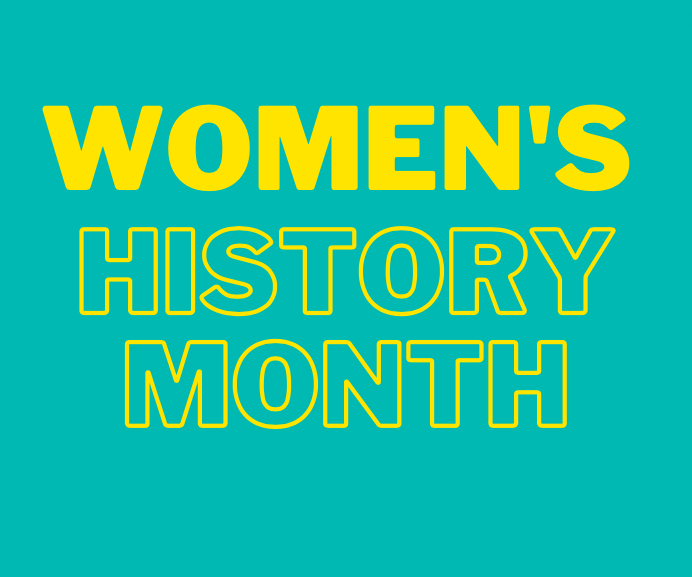Who does COVID-19 impact the most? Reflecting on demographic inequities during women’s history month
March 31, 2021
At the crux of Women’s History Month lies the theory of intersectionality, which, coined by Kimberlé Crenshaw, represents the meeting points of one’s identity. An individual must not be defined by but one facet; an individual is not just their gender, nor their race, nor their religion, et cetera. Without intersectionality and demographic analyses, a time of powerful remembrance like Women’s History Month runs the risk of becoming exclusive, rather than inclusive.
COVID-19 has thrust communities of all individuals into both painful isolation and danger. It has also shined a light on aspects of identity sometimes subject to discrimination. Thus, in the context of an intersectional March 2021, it behooves those of privilege to examine their peers unfairly impacted by the pandemic. Additionally, we ought to address not just our past but our present and why this “new normal” has stricken certain populations in certain harmful manners, but not others.
Relegating women into inequitable household and workforce roles is a mode of discrimination that is taking a nuanced form during the pandemic. In the United States, women make up 91% of all registered nurses according to the 2011 census. Historically, nursing has been prejudicially assumed as an extension of a woman’s traditional domestic duties, which many women and mothers are still expected to perform at home. However, in the context of COVID-19, nurses are our front-liners, putting their lives on the line for our safety every day, as women of all backgrounds.
It took formidable work to alter false perceptions of nursing and was often spearheaded by women in times of immense strife. Such women included Mary Elizabeth Mahoney (1845 -1926), who was the second African American to work professionally as a nurse, one of the very first to graduate from nursing school and also started the National Association of Colored Graduate Nurses.
Limited occupational opportunities is another mode of discrimination that does transcend gender during the pandemic. However, statistics show that women earn at or below the federal minimum wage more than men. According to the U.S. Bureau of Labor Statistics, as of 2015, 62% of federal minimum wage earners were women. When compounded with profiles of who is earning that wage, the United States’ wealth gap becomes even more egregious.
According to the Pew Research Center (as of 2015), for every dollar a white man makes, a black woman makes 65 cents. Furthermore, for every dollar a white man makes, a Hispanic woman makes 58 cents, making them the most underpaid minority.
These pay inequities exist solely on the basis of sexism and racism, as the United States operates on the presumption that masculinity and whiteness are the default and that those who are born outside of those bounds must acclimate. This is wholeheartedly false. Combining these bigoted standards with a global health crisis, however, and minorities are faced with unimaginable hardships that have yet to be solved. Efforts like rent forgiveness and stimulus checks have fallen short, even with the transition of presidential administrations.
There have always been standout figures pushing for labor egalitarianism against the powers that be, specifically within the Latina community. Dolores Huerta is an American labor and civil rights activist who worked with Cesar Chavez to create the National Farmworkers Association, known today as United Farm Workers. Emma Tenayuca was a Latina organizer in San Antonio, motivated by the Great Depression, who earned workers’ rights in the region, with Time magazine running her photo in print when she was only 21 years old.
Healthcare discrimination at large limits the care BIPOC and LGBT individuals may receive, especially as access to COVID-19 care and vaccines fluctuates. These rates are especially high for transgender and Black patients; in a survey conducted by the Center for American Progress, 29% of transgender individuals reported that a healthcare provider refused to see them on account of their gender identity; meanwhile, 4 in 10 Black Americans know someone who has died from COVID-19, according to National Geographic, which is double the rate for White Americans.
Black women and transgender women are populations that experience regular violence and prejudice in our country. They are also two groups that are regularly stamped out and ignored in lieu of more privileged voices within the Women’s History Month movement. But, they are groups that regularly intersect and uplift, with figureheads like Marsha P. Johnson (transgender LGBT rights activist), Audre Lorde (lesbian feminist/critical race/queer studies theorist) and countless others trailblazing intersectional women’s history throughout the 20th century.
Finally, the most recent minority group within Women’s History Month facing discrimination during COVID-19 is the Asian community. Specifically, 2020 saw a 150% increase in hate crimes against the community (according to the AP), sparked by racist rhetoric from figureheads like Donald Trump and other hyper-bigoted mouthpieces. Asian women are often bent into sexualized stereotypes and subjected to racially motivated violence as a result; this March saw a white gunman kill eight victims (six of whom were Asian women) at three massage parlors. Despite the clear intersection of his misogynistic, xenophobic and racist motivations, however, the perpetrator still enforces that he was troubled sexually, a sign indicative of male privilege.
In the face of these rampant stereotypes, advocates continue to emerge from this community to push for equality and power. Cecilia Chung is the first transgender and Asian woman to chair the San Francisco Human Rights Commission and champions LGBT/civil rights work as an individual living with HIV/Aids. Samoan American Terisa Siagatonu won President Obama’s 2012 Champion of Change award for her Pacific Island Activism and for her work in the LGBT, education, and climate change communities. Both women are striving to redefine the gender stigmas around Asian women.
History seems disjointed from our present as COVID-19 rages onward, but I believe that Women’s History Month offers a time of togetherness, reflection and opportunity. Broadening our perspective and compassion has never been more crucial. By looking to the past and admiring those who persevered with less, we can glean new routes to persevere forward. History is active, not passive, just as intersectionality is about bridging gaps through action and inclusion.








